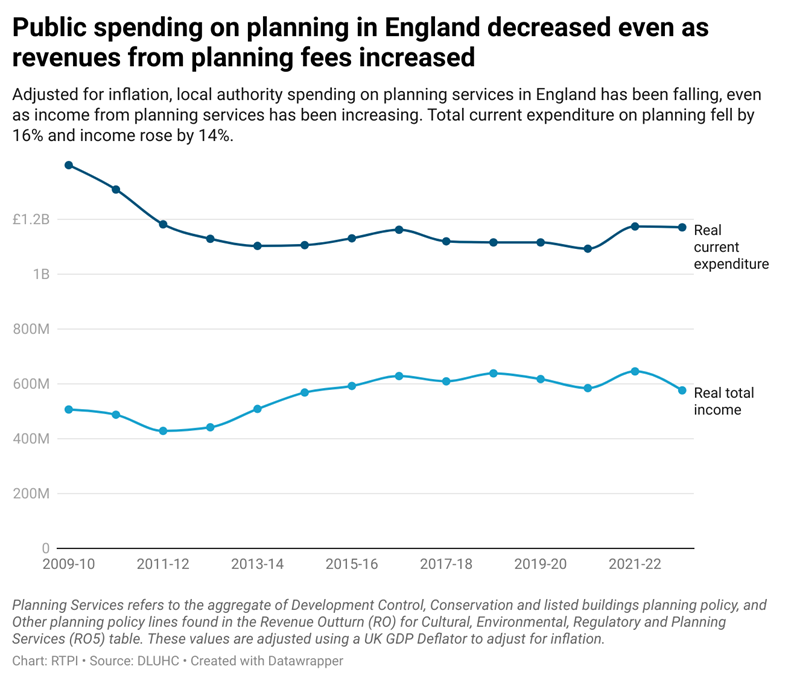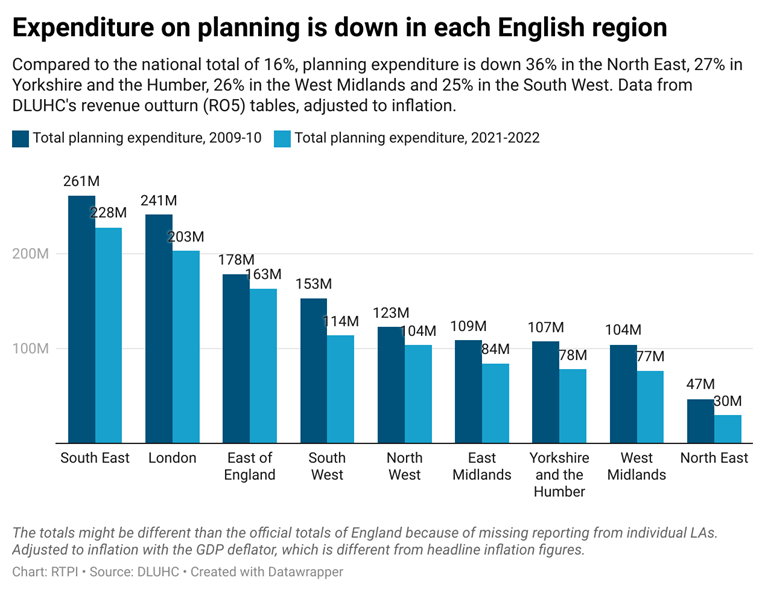The RTPI’s Policy and Data Analyst, Gabor Csontos, considers the likely impact of the Government’s latest fee increases on the chronic underfunding of planning services.
Today an important new Statutory Instrument comes into force that will increase the level of planning fees, continue these rises with any future inflation and set accompanying expectations about the speed of some planning decision-making. This additional funding is an important step the Government is taking to tackle the chronic under-resourcing of local planning authorities, which the RTPI has been campaigning on consistently, and responds to dissatisfaction with England’s planning system from other sectors.
Evidence from our recent State of the Profession report suggests that planners should welcome these fee increases – as the RTPI and other sector bodies have done – but also shows that further steps are needed to fundamentally improve England’s planning system.
Planning fee increases are necessary because inflation gradually devalues them. These charges and the income local planning authorities receive from them have already risen in English local authorities over more than a decade - by 14% between 2009-10 and 2022-23 (from £507m to £577m). And yet, the overall total expenditure of planning departments has still fallen by 16% (from £1.4 billion to £1.17 billion).

Charts like this one from show that even when planning fees income grew, these have fallen short of the investment that planning services traditionally received from their council’s core spending. Over the same period, direct public sector expenditure on planning decreased by 33% (from £893 million to £594 million) leaving planning departments themselves to deal with the deficit.
This also explains the regional variations we see in planning department’s resources in recent years. Total expenditure was down 36% in the North East, 27% in Yorkshire and the Humber, 26% in the West Midlands and 25% in the South West by 2022. Planning departments in regions that were already spending the least on planning overall have seen the greatest resourcing challenges, spending a quarter less than they did over a decade ago on average. No part of England has bucked this trend but the mildest fall (by 9%) was in the East of England.

The future of England’s planning system therefore depends on more than just increasing the total level of resourcing for these vital public services. Below I’ve outlined how the quality of new investment, the expectations accompanying this resource, it’s alignment with broader reforms, and the state of planning’s backlog must also be considered.
Planners are right to ask if council’s rising planning income will be properly ringfenced for these services or just suggested for protection in guidance but not reality, if changes will enable full cost recovery for the planning process – as promised on business applications in the Chancellor’s Autumn Statement - or still leave planning services with large deficits?
Additional resource must be consistent with other performance and improvement measures. For example, if the Government’s expectations of “improved” planning services are not proportionate with the funding available under these new rises then decision-making quality and speed will continue to lag.
Similarly, adequate funding for the ‘new burdens’ imposed on local planning authorities under the Government’s planning reforms will be needed to improve all those planning services not covered by development management but that still contribute to the delivery of homes and other public goods. These include some of the Levelling Up and Regeneration Act’s top priorities like local plan delivery, new design considerations, the introduction of new data and digital tools, and headline-grabbing experiments for planning like the Infrastructure Levy and new Street Votes amongst others.
Planning services would also likely struggle if they continue to carry the full weight of post-covid backlogs. Compared to the total public spending of £1.17 billion on planning services, the Planning Skills Delivery Fund (PSDF) £12 million pledged per year amounts to a minimal 1% increase in total council spending on planning. However, the RTPI would still like to see the first round awarded immediately to avoid further delays across hundreds of councils who applied over the summer.
With these unknowns still outstanding, it is hard to say if this combination of reforms will leave planning services better or worse off in the long run.
However, thanks to our State of the Profession research it is at least clear that minor changes alone are not enough to adequately resource our planning system or ensure it is run by respected and well-paid professionals working in decent conditions. As the RTPI’s recent ‘Planifesto’ makes clear, only a clear political commitment can do that.


